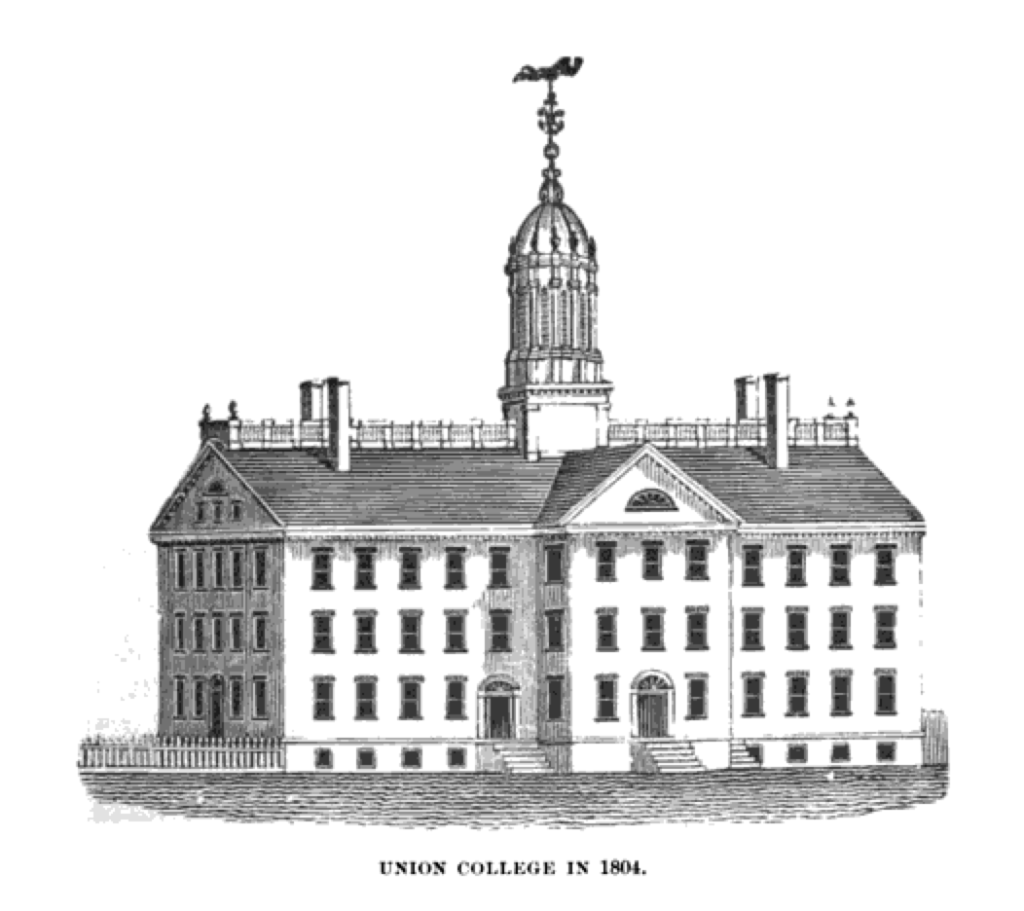There could hardly be an architect who had more of an impact on the look of Albany as it grew into a substantial city in the early 19th century than Philip Hooker. He was widely respected, influential in politics and society Hooker’s classical stylings let the city start to rise above its simple Dutch bricks and tiny frame houses. Unfortunately, so much of Hooker’s work is gone now that it’s possible to forget his importance.

Philip Hooker was born in Rutland, Massachusetts (Worcester County) in 1766, the first child of Samuel Hooker and Rachel Hinds. Samuel was a carpenter who moved his family to Albany around 1772. How Hooker came to be an architect, and whether he spent time in New York City learning the profession, is not clear. The first building that we know he designed was a doozy: what is now called the First Church in Albany, earlier known as the North Dutch Church. (Old as the church is, its pulpit is even older; it dates to 1656 and is the oldest pulpit in the United States.) And as you can see, the front entry was originally different from the one we know today.
Soon after, he built the second building at Union College. West College, located on the corner of Union and College streets in Schenectady, was begun in 1798 but not finished until 1804. The building was sold to the city and county for use as offices, courthouse and jail. Union bought it back in 1831, then sold it to the city again in 1854. In 1890 it was demolished to make room for a school; today the site is merely a parking lot with an historical marker. Around this same time he also built a State Arsenal in Albany, long since razed.

Hooker’s work proceeded at a tremendous pace in the first decade of the 19th century, with commissions in Albany for St. Peter’s Episcopal Church (razed 1859), and the South Dutch Reformed Church; and St. Paul’s Episcopal in Troy and Trinity Episcopal in Lansingburgh. He also built the New York State Bank (some of its elevation survives to this day, moved up the hill from its original location), the Bank of Albany (gone), and the Mechanics and Farmers Bank (also gone). He built the first dedicated Capitol Building in 1809 (gone), the old Albany City Hall (gone), and the old Albany Academy building (happily, still standing in Academy Park, headquarters of the city school district). His private homes fared better than his institutions: the Aiken house in Rensselaer, as well as Hyde Hall in Cooperstown and Roscoe Conkling House in Utica, still stand, as well as what is now the Fort Orange Club (attributed to Hooker, anyway). His parents having moved to the Utica area, Hooker’s work can be found out there as well, and at Hamilton College’s chapel.
Remnants of Hooker’s Capitol building were recovered just a couple of years back in the ravine of a local country club; I’m not sure whether the plans to display them have yet come to fruition.
He died in 1836, at the age of 69. Hooker is buried at Albany Rural Cemetery, though like his State Bank building, he didn’t start out where he is now. He was originally buried at the State Street Burying Grounds.
There is a thorough book on Hooker from about 20 years ago, still available.

1 thoughts on “Albany Architects: Philip Hooker”